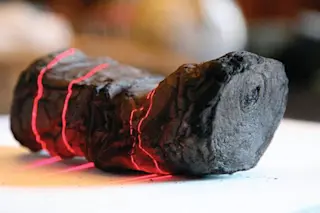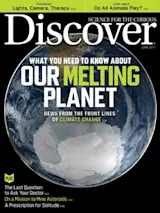Brent Seales has made a career of unlocking lost secrets. With specialized software he and his team developed, the University of Kentucky computer scientist can read ancient scrolls too fragile to unroll. Recently, he watched as Hebrew consonants from the charred remains of an ancient Jewish scroll flashed across a computer screen.
Archaeologists discovered the scroll in 1970 at En-Gedi, the site of an ancient synagogue in Israel that burned in the sixth century. The fire reduced the document to a charred lump that crumbled at the slightest touch. But last year, Seales’ software virtually unwrapped a three-dimensional scan of the scroll’s internal structure, flattening the text to two-dimensional images. Centuries after it was last read, the scroll’s writing was once again accessible. Inside were two chapters of the Book of Leviticus; researchers carbon dated the ink to as early as the third century.
Discover spoke with Seales about his ...















